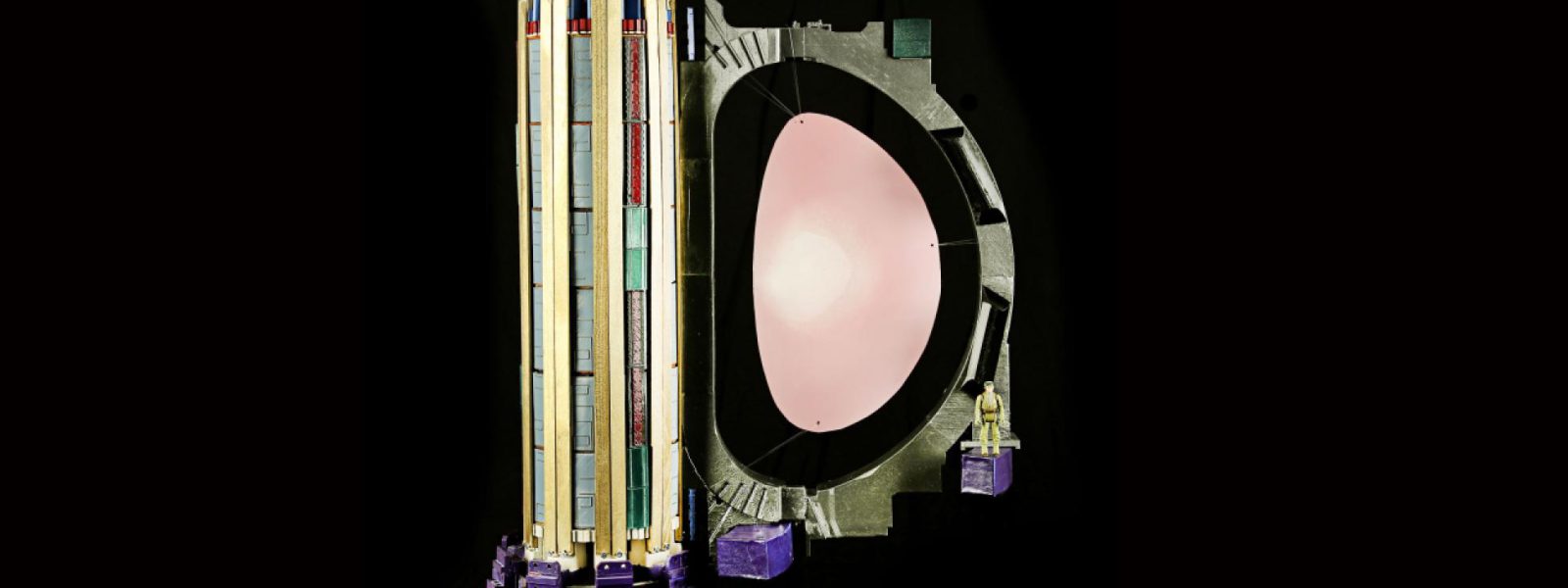―Lynne Degitz
ITER, the international fusion research facility now under construction in St. Paul-lez-Durance, France, has been called a puzzle of a million pieces. US ITER staff at Oak Ridge National Laboratory are using an affordable tool—desktop three-dimensional printing, also known as additive printing—to help them design and configure components more efficiently and affordably.
“Now for pennies instead of tens of thousands of dollars, we can have impact right away with 3D printing. It lets us see what the part actually looks like,” said Kevin Freudenberg, an engineer who supports the US ITER magnets team and has led the project’s use of 3D printing. “On 3D CAD (computer-aided design) displays, you can’t feel the shape of an object. You just see it. Many people have trouble seeing 3D projections or find them tiresome to view over time. With the 3D printed objects, you can run your finger over the surface and notice different things about the scale and interfaces of the component.”
The fusion engineering design process has long relied on mock-ups and prototypes. Full-scale models cast or machined from metal and other materials continue to have value and will still be a part of the US ITER development process, as will 3D computer modeling; however, the affordability and accessibility of desktop 3D printing offers a number of advantages.
Freudenberg said that 3D printing helps mitigate risk: “The models show complexity and help us catch issues earlier in the process.”

A normal part of the engineering process is the identification of interferences or design problems before a component is finalized. Mark Lyttle, an engineer working on the pellet injection and plasma disruption mitigation systems for US ITER, observed, “It’s a lot more time consuming and expensive when you find that mistake in a metal prototype than it is in a 3D printed component. 3D printing is very low cost. With metal, you may have to start over if you can’t re-machine it.”
Gary Lovett, a designer with US ITER, added, “If you can correct one design and make one revision, you’ve basically paid for the printer. It’s so much more informative, especially if you have assemblies to put together.”
The printed components are also shifting how manufacturers interact with the ITER designs. Freudenberg recalled, “We went to a vendor meeting recently. We looked at line drawings for a minute, and then the vendors spent hours looking at and discussing the 3D parts. Most of the meeting was spent talking about the parts. Having something in your hand that is tactile can show what machine processes and best practices to use in manufacturing.”
Some components, such as the 60 foot tall central solenoid, must be printed at “toy” scale; others can be printed at actual size. Even handling objects at toy scale is useful, as it brings massive components into the hands of engineers and manufacturers and provokes useful analysis.
Lyttle explained, “3D printing helps you look at the design and see specific parts, like an O ring that needs more space around it to sit properly. On the computer screen, you could miss that.
“On the screen, some components don’t look especially bulky,” Lyttle added. “But when you make it in metal, it will be a hunk of material that is too heavy and hard to handle. When you have a physical model, it is easier to spot opportunities to save material and make the design more efficient and the manufacturing less expensive.”
Printing the component also helps engineers check the interfaces for possible collisions. “You can put it together, move it a bit and visualize how it’s going to be built. You can see problems like a weld you can’t get to or a screw head that is inaccessible,” Lyttle said.
Lyttle also pointed out how engineering has changed over time: “When I was in school, 3D modelling on computers was starting to really catch on, although two-dimensional design still dominated most industries. The generation after me saw the 3D tools get better and cheaper, and now the field has really embraced 3D CAD on the computer. I expect to see the same trend with additive manufacturing tools like our 3D printer. An engineer or designer can now plot physical parts almost as easily as plotting a drawing. Each step up in engineering design technologies is pretty significant.”
Freudenberg observed, “We’ve used 3D printers before but have outsourced the printing. Now that we have it in-house, we can produce high resolution parts in a couple of hours.”
High-end 3D printing using titanium powders and other alloys is an area under development at the Manufacturing Demonstration Facility of Oak Ridge National Laboratory. Eventually, rapid-prototyping that employs a broad range of materials is expected to be routine.
“I think we will see this method of producing metal parts compete in the engineering market in 5 to 10 years,” Freudenberg said. These developments could have a significant impact on fusion engineering and future progress in fusion technology.
US participation in ITER is sponsored by the Department of Energy Office of Science and managed by Oak Ridge National Laboratory in Tennessee, with contributions by partner labs Princeton Plasma Physics Laboratory and Savannah River National Laboratory.
Media Contact: Lynne Degitz or @US_ITER
 A “toy”-sized, but accurately scaled, version of the ITER central solenoid (left) with one of the 18 toroidal field coils, printed on a desktop 3D printer. The pink oval represents the plasma. Notice the action figure at right showing the model’s scale.
Photo: US ITER/ORNL
A “toy”-sized, but accurately scaled, version of the ITER central solenoid (left) with one of the 18 toroidal field coils, printed on a desktop 3D printer. The pink oval represents the plasma. Notice the action figure at right showing the model’s scale.
Photo: US ITER/ORNL